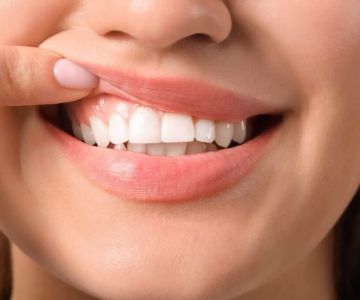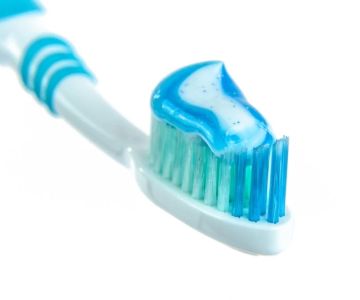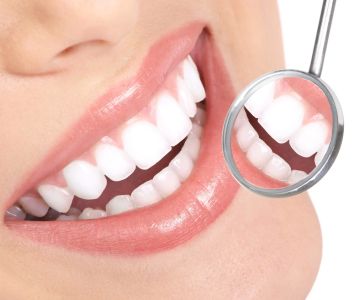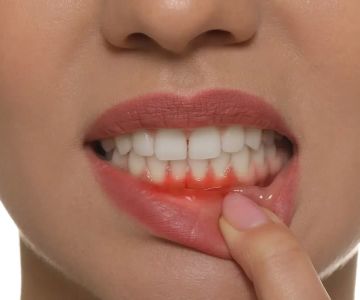Gum Problems: A Comprehensive Overview
Gum problems, specifically periodontal disease, can have a significant impact on your oral health and overall well-being. It's a condition that affects the gums and the bone that supports your teeth. Poor hygiene is a common cause, but genetics and certain health conditions can also increase the risk. Symptoms of gum problems can include bad breath, bleeding gums, loose teeth, and gum recession. The severity of the disease progresses in stages, from gingivitis in the early stage to advanced periodontitis that can lead to tooth loss if left untreated.
Symptoms and Causes of Gum Problems
The symptoms of gum problems can be quite diverse. You might notice reddish or purplish gums that bleed easily, have a sore or unpleasant taste in your mouth, experience pain when chewing, or notice that your gums are receding and your teeth are becoming loose. The main cause of gum problems is the buildup of dental plaque, which contains various bacteria that can infect the gums. Risk factors for gum problems include smoking, poor oral hygiene, diabetes, autoimmune diseases, hormonal changes, stress, genetics, and heart disease. The bacteria that cause gum problems can even be passed from person to person through prolonged contact such as kissing.
Diagnosis and Tests for Gum Problems
Dentists can diagnose gum problems during a routine examination by looking for plaque buildup and asking about your symptoms. They may use a periodontal probe to measure the pockets around your teeth to determine the extent of bone loss. Dental X-rays can also provide detailed images of bone loss. Older X-rays can be compared to monitor changes over time.
Management and Treatment of Gum Problems
While gum problems are not curable, they are manageable with the right treatment. Early detection and intervention are crucial. For very early gum problems (gingivitis), routine dental cleaning and improved oral hygiene can reverse the condition. More advanced cases may require scaling and root planing, pocket reduction surgery, bone grafting, gum grafting, guided tissue regeneration, or treatments like LANAP. Platelet-rich fibrin (PRF) and platelet-rich plasma (PRP) can also aid in healing and tissue regeneration.
Prevention of Gum Problems
Most cases of gum problems can be prevented with consistent and proper oral hygiene. This includes brushing your teeth two to three times a day, flossing daily, using an antibacterial mouthwash, avoiding smoking, and visiting your dentist for regular cleanings and exams. Some people may need more frequent cleanings due to genetics or other health conditions.
Outlook and Prognosis for Gum Problems
Gum problems are not life-threatening but can lead to other health conditions if the infection spreads. Early detection and treatment can help manage the condition and improve oral health. If you have symptoms such as bleeding, tender, or swollen gums, it's essential to see a dentist promptly.
Common Questions and Answers about Gum Problems
Early signs of gum problems include swollen, tender, and discolored gums with plaque buildup. The longevity of keeping your teeth with gum problems varies depending on the severity. In an emergency or if gum problems are severe, it's important to seek an urgent dentist appointment. NHS dental treatment is free for certain groups, and the cost of treatment depends on your eligibility. To prevent gum problems, follow good oral hygiene practices like brushing with fluoride toothpaste, cleaning between teeth, and replacing your toothbrush regularly.
In conclusion, gum problems are a significant concern that require attention and proper care. By understanding the symptoms, causes, available treatments, and prevention methods, you can take proactive steps to maintain good gum health and overall oral well-being. Regular dental check-ups and consistent oral hygiene are key to preventing and managing gum problems effectively.






 Elegant Smiles of Sea Girt4.0 (130 review)
Elegant Smiles of Sea Girt4.0 (130 review) Superior Smiles3.0 (23 review)
Superior Smiles3.0 (23 review) Westchester Smile Design | Part of the Roligo Network4.0 (525 review)
Westchester Smile Design | Part of the Roligo Network4.0 (525 review) Clove Dental Camarillo4.0 (225 review)
Clove Dental Camarillo4.0 (225 review) North Georgia Pediatric Dentistry4.0 (673 review)
North Georgia Pediatric Dentistry4.0 (673 review) Bio Dental4.0 (450 review)
Bio Dental4.0 (450 review) The Importance of Oral Health Education During Pregnancy for a Healthy Pregnancy
The Importance of Oral Health Education During Pregnancy for a Healthy Pregnancy Best Tips for Brushing Your Teeth Properly for Healthy Gums: Essential Techniques for Oral Health
Best Tips for Brushing Your Teeth Properly for Healthy Gums: Essential Techniques for Oral Health Why Skipping Dental Checkups Can Lead to Bigger Oral Health Problems
Why Skipping Dental Checkups Can Lead to Bigger Oral Health Problems Advantages of Porcelain Dental Restorations
Advantages of Porcelain Dental Restorations How Can Diabetes Cause Tooth and Gum Problems? Preventing and Managing Oral Health Issues
How Can Diabetes Cause Tooth and Gum Problems? Preventing and Managing Oral Health Issues Healthy Habits for Promoting Good Oral Health and Hygiene: Tips for a Healthy Smile
Healthy Habits for Promoting Good Oral Health and Hygiene: Tips for a Healthy Smile